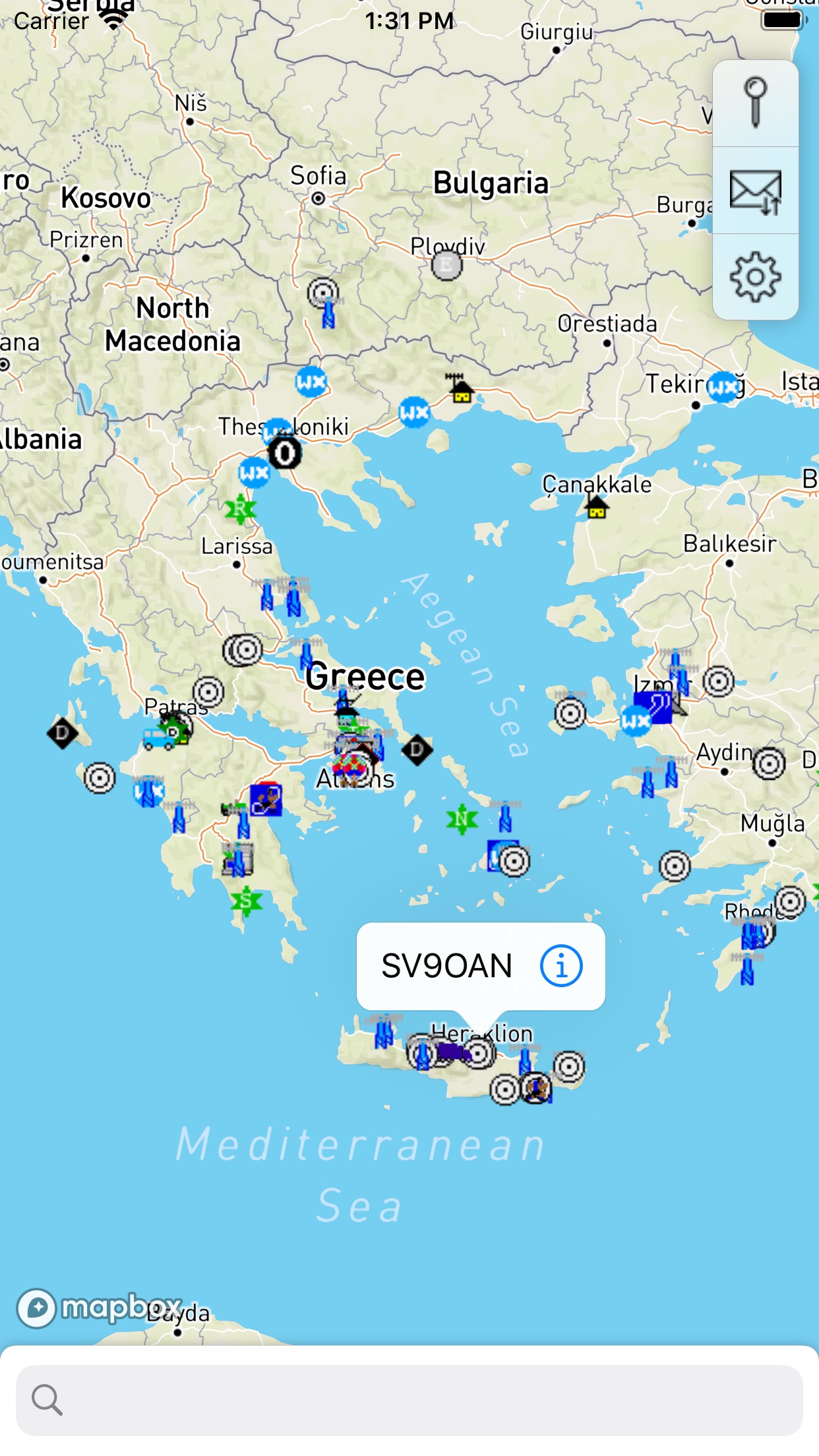PocketPacket iOS macOS
PocketPacket is a full-featured APRS client with a built-in TNC. The "Automatic Position Reporting System" is a packet communication protocol used by amateur radio operators (hams) around the world, to report position, status, station capabilities, weather or other information in real time. Packets can also be used for broadcasting announcements or one-to-one messaging.
PocketPacket incorporates a software-based TNC, allowing you to directly capture and visualize, or encode and transmit 1200 baud packets (AFSK modulation) using a VHF radio transceiver. With PocketPacket you can also get and send packets over the Internet, by selecting one of the available Tier 2 servers of the global APRS-IS network.
Incoming data is presented on a map, as most packets define some object, with a specific symbol and location. By selecting a symbol, you can view the latest information sent for the corresponding object, as well as the raw packets that produced it. All available objects are also shown in a list, which allows you to search for the ones you are looking for. Messages and bulletins are shown in a separate set of screens, structured like an e-mail client.
With PocketPacket you can follow the status of the APRS network, submit your station's info, monitor moving objects, get real time weather reports directly from local stations and more. PocketPacket is ideal for field work or the ham shack.
73 de SV9OAN
Frequently Asked Questions
Q: How do I connect my iOS device to my radio?
A: To connect the radio to your iPad/iPhone/iPod Touch, you need a very simple cable that connects the radio’s audio-out with your device’s audio-in and vice versa. Check this example.
However, note that your radio needs to have VOX, or you need some kind of external VOX circuit in order to transmit from your iOS device, as there is no way of controlling PTT. A Signalink should work, but I have not tried it.
Where do I get such a cable? Do you sell one?
The cable should be very easy to make. You just need to go out and buy a 4-pin 3.5mm audio plug. No, I don’t make or sell audio cables.
Q: Why am I not getting any packets in from the microphone?
A: Capturing packets from the microphone is very difficult and results may vary from device to device (I do not know how sensitive the mics are, etc.). Please try using a cable connection.
Q: What’s a passcode and why do I need one?
A: You need a passcode to be able to submit packets via APRS-IS servers. When you use the right passcode, you will show up as “verified” in the server status page.
Q: Where do I get a passcode?
A: To make the long story short: contact us.
Also, if you have an APRS-IS passcode from another software, use that. Your passcode is based on you callsign and works with all servers. It has nothing to do with the software you are using.
However, I think that normally you should contact your closest APRS-IS server administrator for getting a passcode. The purpose of the passcode is to verify somehow that you are indeed a ham. The most appropriate person to verify this, should be the one closer to you, that may also be aware of any amateur radio laws and regulations specific to your region or country.
That is why in the Usage Guide I suggest contacting your closest APRS-IS server administrator and requesting a passcode. Some server operators say it is up to the application author to provide it. I have no problem with this and have happily handed out passcodes to everyone that has asked, giving me a callsign that looks valid.
Privacy Policy
PocketPacket does not store any information on any external server. PocketPacket does no tracking and no analytics.
Any information you broadcast over APRS is entered by you in the settings screen and stored on your device. Please make sure that does not include any sensitive data.
